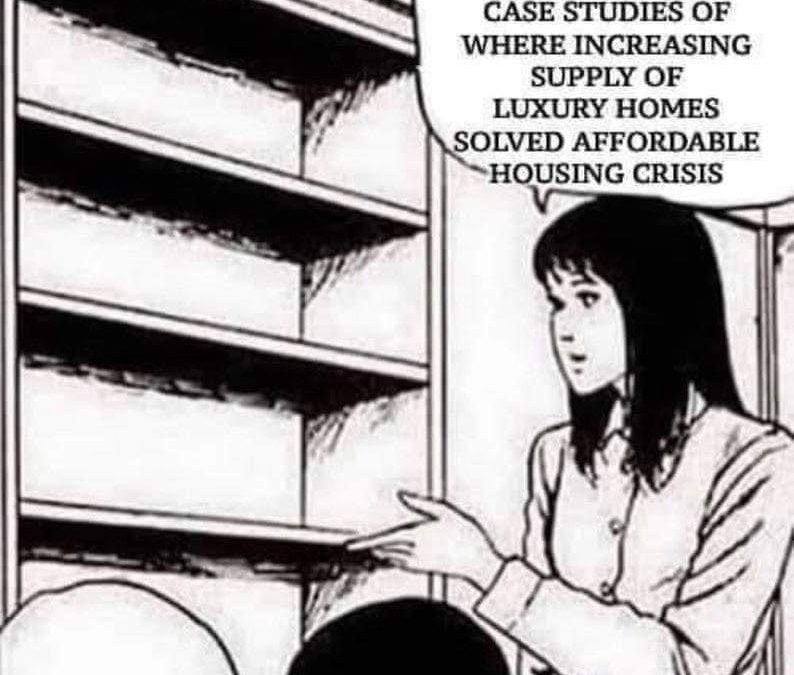
Former Raleigh Planning Commission Chair Bob Mulder shares his thoughts on the consequences of increasing density without taking a holistic approach.
There are tall buildings popping up all over Raleigh, but one aspect of this Council’s drive to blanket the city with density is yet to become apparent to unsuspecting citizens. Taller multi-unit buildings will start showing up in their residential neighborhoods as well. This is due to three reasons. The Raleigh City Council’s reckless drive towards spreading density everywhere by essentially eliminating single-family zoning and minimum parking requirements and eliminating significant community engagement. Higher densities only along transit corridors should not be implemented until we have reached a significant level of transit access, both bus and light rail. Council’s sledgehammer efforts at planning have been both thoughtless and undisciplined.
In neighborhoods within a quarter mile of future transit–a Future Transit Area (FTA)–someone could build, as an example, up to seven 1-bedroom units on a lot the size of mine (0.26 acre). No parking would have to be required. If there would be only one occupant per unit, 7 parking spaces on the street would be required. Three in front of the building and the remaining four cars would have to be in front of two other homes on that street. What if rents stay high as they are now, or even higher, it’s possible that each unit might have two occupants which would mean 14 cars. Now, it would be necessary to be able to park 11 cars in front of more homes. That would require parking in front of 4 homes in the same street.
What if over time that same street ends up with 10 buildings each with seven units and occupied by 2 people each. This would result in 140 cars. 30 cars parked in front of the buildings, and the remaining 110 cars would require the street frontage along 37 homes for parking. Will these residents magically give up their cars? Will they be able to walk to a grocery store, medical facilities? Does the current City Council think that they can force people out of their cars? Will residents be able to do everything by using transit? How soon does the City Council think this will happen? Will we have a fully functional efficient transit system (light rail and bus) in ten years’ time? I think it’s unlikely, but what I do know is that traffic will be much worse than it is now.
I don’t think the City Council spent any time discussing these issues. What about the costs of upgrading sewer lines that are 60 or more years old? What about the loss of the mature urban forests in these older neighborhoods as lots are cleared? We will have our own version of Amazon Forest clearing. The Council clearly enjoys making policies, but they are totally unaware when it comes to consequences.
I support density and a larger housing base, but density without infrastructure is a cart-before-the-horse approach to the issue with real and unaddressed quality-of-life impacts for neighbors. A rain-follows-the-plow approach by the city (by increasing density without building the support infrastructure) serves only the development industry seeking to save a buck at our expense.
Density does not improve quality of life or lower housing prices. New York City has very high density and very expensive real estate and taxes. Quite a few New Yorkers have escaped to Raleigh. Raleigh belongs to its citizens, not the City Council, and growth should be handled in a thoughtful, disciplined manner.
Raleigh citizens need to vote in a new set of city council members who will take another look at the ordinances eliminating single-family zoning and parking requirements all over the City of Raleigh. These ordinances need to be focused on transit corridors. The other issue is to bring back Citizens Advisory Councils. City Council members need to listen to and represent all citizens.
If you appreciate the kind of reporting we bring to you
|
Please donate $10 or $20, Thanks for supporting |
 |

